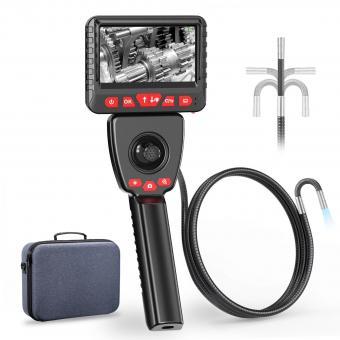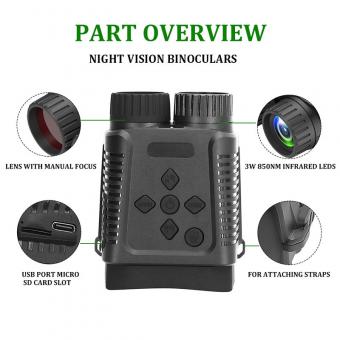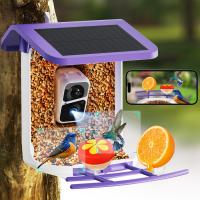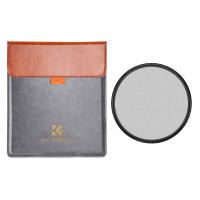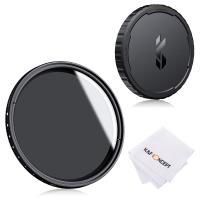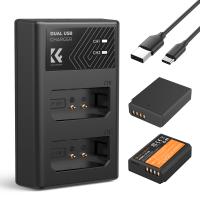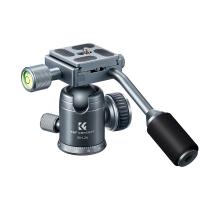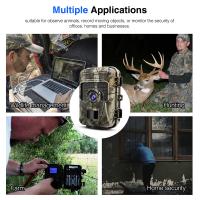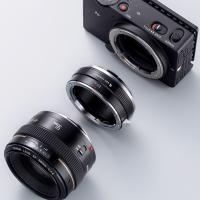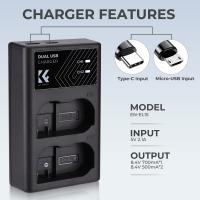How To Choose Binoculars For Wildlife Viewing ?
When choosing binoculars for wildlife viewing, it is important to consider several factors. Firstly, consider the magnification power and objective lens diameter. Higher magnification allows for a closer view, but it may also result in a narrower field of view and shakier image. A larger objective lens diameter allows more light to enter, resulting in brighter images. Secondly, consider the binoculars' size and weight, as you will likely be carrying them for extended periods. Compact and lightweight binoculars are more convenient for outdoor activities. Additionally, consider the binoculars' durability and weather resistance, as wildlife viewing often takes place in challenging environments. Lastly, consider your budget and choose binoculars that offer good quality within your price range. It is recommended to try out different models and brands before making a final decision to ensure a comfortable fit and clear image.
1、 Magnification and Objective Lens Size
When it comes to choosing binoculars for wildlife viewing, two important factors to consider are magnification and objective lens size. These factors determine the clarity and brightness of the image you see through the binoculars.
Magnification refers to how much closer the object appears compared to the naked eye. Common magnifications for wildlife viewing range from 8x to 10x. Higher magnifications, such as 12x or 15x, may provide a closer view, but they can also make the image shakier and harder to focus. It's important to find a balance between magnification and stability.
Objective lens size refers to the diameter of the front lenses of the binoculars. A larger objective lens allows more light to enter the binoculars, resulting in a brighter image. However, larger objective lenses also mean heavier and bulkier binoculars. For wildlife viewing, objective lens sizes between 40mm and 50mm are commonly recommended.
In recent years, there has been a growing trend towards compact and lightweight binoculars for wildlife viewing. These binoculars offer smaller objective lens sizes, typically around 32mm, making them more portable and easier to carry. Advances in lens and coating technology have also improved the brightness and clarity of images produced by these compact binoculars.
Ultimately, the choice of binoculars for wildlife viewing depends on personal preference and specific needs. It's recommended to try out different models and consider factors such as comfort, durability, and additional features like waterproofing. Consulting with experts or reading reviews can also provide valuable insights into the latest advancements in binocular technology.

2、 Field of View and Close Focus Distance
When it comes to choosing binoculars for wildlife viewing, two important factors to consider are the field of view and the close focus distance.
The field of view refers to the width of the area that can be seen through the binoculars at a specific distance. A wider field of view allows you to see more of the surrounding environment, making it easier to spot and track wildlife. It is especially important for birdwatching or observing fast-moving animals. A field of view of at least 300 feet at 1000 yards is recommended for wildlife viewing.
The close focus distance is the minimum distance at which the binoculars can focus clearly. This is crucial for observing small animals or details on plants. A close focus distance of around 6-8 feet is ideal for wildlife viewing.
In addition to these factors, it is important to consider the latest advancements in binocular technology. Many manufacturers now offer binoculars with image stabilization, which can greatly enhance the viewing experience by reducing hand shake and providing a steadier image. This can be particularly useful when observing wildlife from a distance or in low light conditions.
Furthermore, binoculars with high-quality optics and lens coatings can improve image clarity and brightness, allowing for better wildlife observation. Look for binoculars with multi-coated or fully multi-coated lenses, as they minimize glare and maximize light transmission.
Overall, when choosing binoculars for wildlife viewing, consider the field of view, close focus distance, and the latest advancements in technology to ensure a rewarding and immersive wildlife viewing experience.
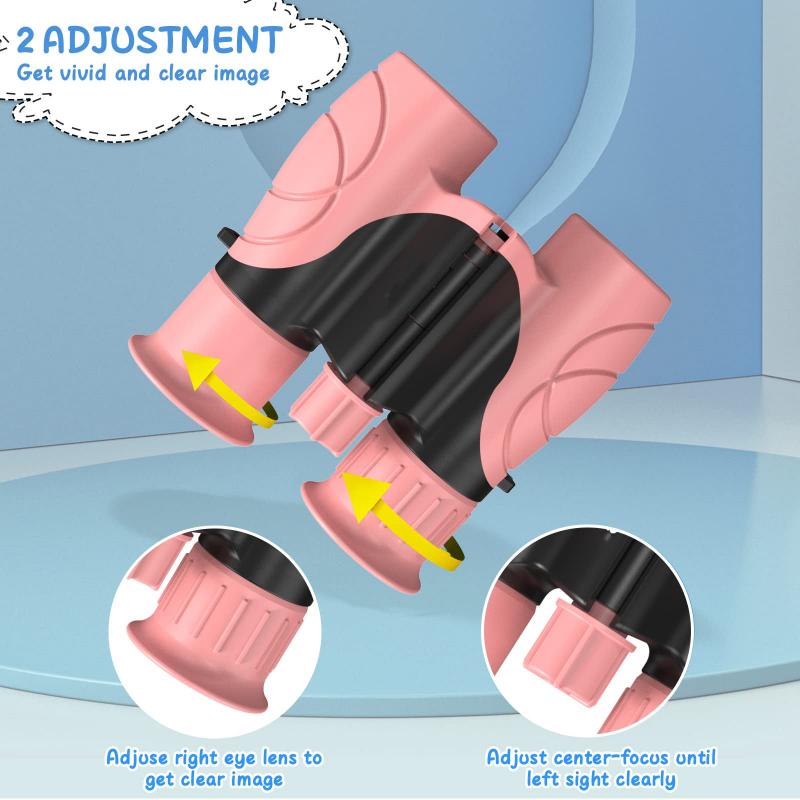
3、 Lens Coating and Image Quality
When choosing binoculars for wildlife viewing, one of the most important factors to consider is lens coating and image quality. The lens coating plays a crucial role in enhancing the clarity and brightness of the images you see through the binoculars.
Lens coating refers to the thin layers of chemicals applied to the glass surfaces of the binoculars' lenses. These coatings help reduce glare, improve light transmission, and enhance color fidelity. There are different types of lens coatings available, such as anti-reflective coatings, multi-coatings, and fully multi-coatings.
Anti-reflective coatings are the most basic type and help reduce glare and reflections. Multi-coatings are more advanced and provide better light transmission and image quality. Fully multi-coated lenses offer the highest level of performance, providing excellent brightness, sharpness, and color accuracy.
In recent years, there have been advancements in lens coating technology. Manufacturers have developed new coatings that further improve image quality, such as hydrophobic coatings that repel water and oil, and scratch-resistant coatings that protect the lenses from damage.
When choosing binoculars, it is recommended to opt for models with fully multi-coated lenses. These binoculars will provide the best image quality and ensure a clear and bright view of wildlife. Additionally, consider the size of the objective lenses, as larger lenses allow more light to enter the binoculars, resulting in brighter images.
In conclusion, when selecting binoculars for wildlife viewing, paying attention to lens coating and image quality is crucial. Opting for binoculars with fully multi-coated lenses will ensure superior performance and an immersive wildlife viewing experience.
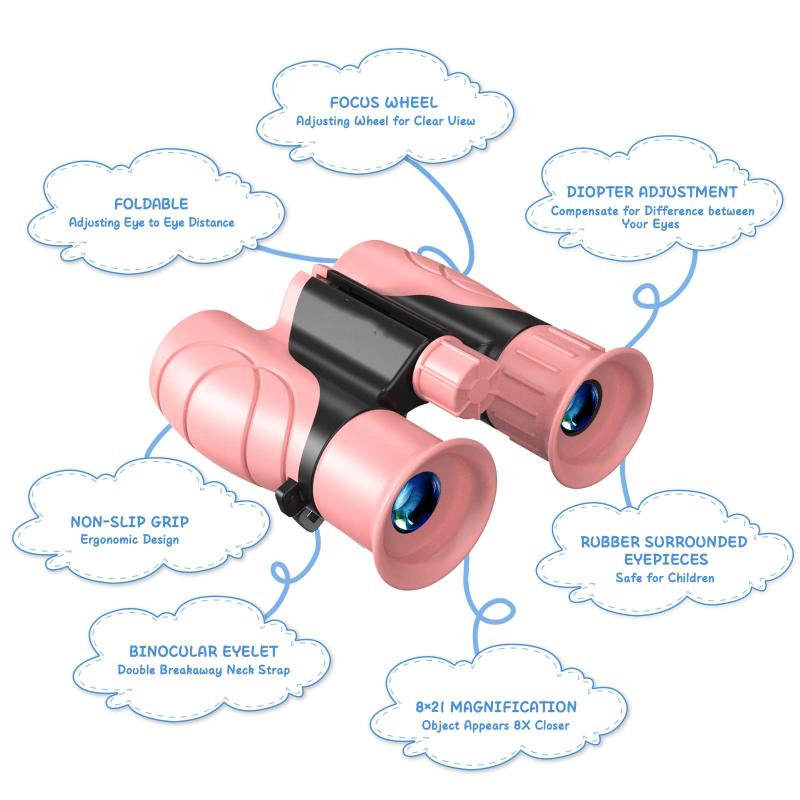
4、 Size, Weight, and Portability
When it comes to choosing binoculars for wildlife viewing, there are several factors to consider. One of the most important factors is the size, weight, and portability of the binoculars.
Size: The size of the binoculars is crucial for wildlife viewing as it determines how easy they are to carry and handle. Compact binoculars are lightweight and easy to pack, making them ideal for hiking or traveling. However, they may sacrifice some optical performance compared to larger models. On the other hand, larger binoculars offer better image quality and light-gathering capabilities, but they can be heavier and bulkier.
Weight: The weight of the binoculars is another important consideration, especially if you plan on using them for extended periods. Heavy binoculars can cause fatigue and strain on your neck and arms. Opt for lightweight models that are comfortable to hold for long periods without compromising on optical quality.
Portability: Portability is closely related to size and weight. Consider how easily you can carry the binoculars in a backpack or around your neck. Look for features like a compact design, foldable eyecups, and a durable carrying case for added convenience.
In recent years, there have been advancements in binocular technology, such as the use of lightweight materials and improved lens coatings. These advancements have made it possible to find binoculars that are both compact and offer excellent optical performance. Additionally, some manufacturers now offer image stabilization technology, which helps reduce hand shake and provides a steadier view, particularly useful for wildlife viewing.
Ultimately, the choice of binoculars for wildlife viewing depends on your personal preferences and specific needs. Consider the size, weight, and portability of the binoculars, and take advantage of the latest advancements in technology to enhance your wildlife viewing experience.



